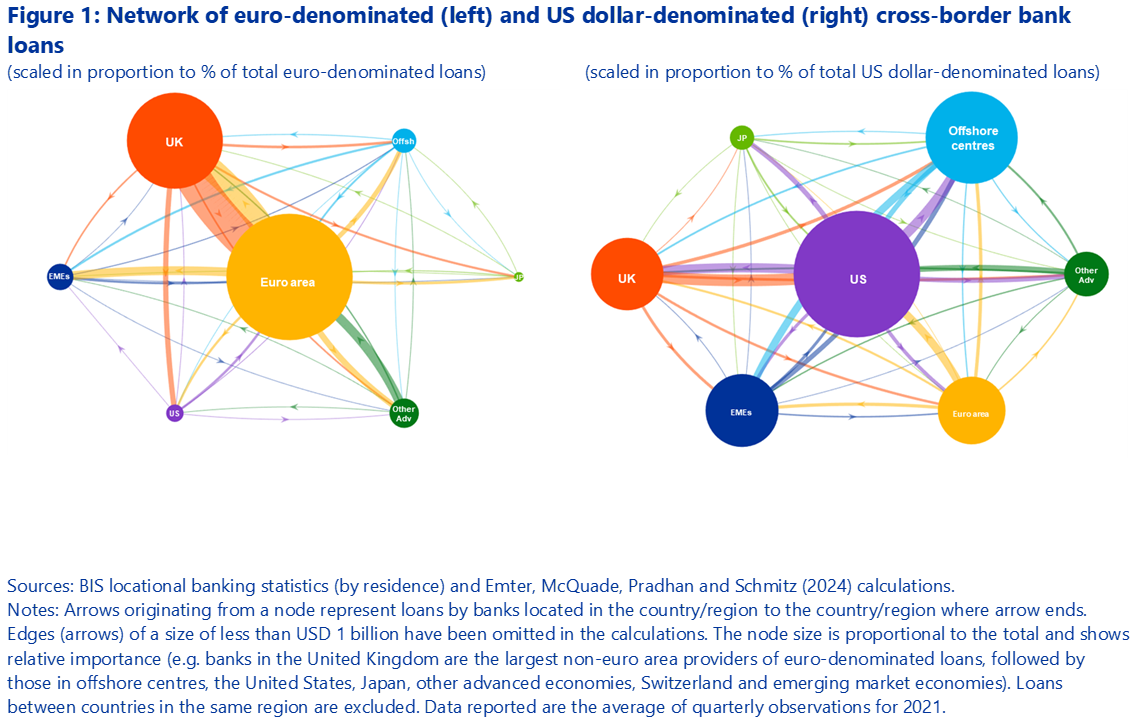References
Boz, E., Casas, C., Georgiadis, G., Gopinath, G., Le Mezo, H., Mehl, A., & Nguyen, T. (2022). Patterns of invoicing currency in global trade: New evidence. Journal of International Economics, 136(100).
Emter, L., McQuade, P., Pradhan, S.-K., Schmitz, M. (2024). Determinants of currency choice in cross-border bank loans. (Working Paper Series No. 2918). European Central Bank.
Gopinath, G., & Stein, J. C. (2021). Banking, Trade, and the Making of a Dominant Currency. The Quarterly Journal of Economics, 136(2), 783–830.
Mehl, A., Sabbadini, G., Schmitz, M., & Tille, C. (2024). Distance(s) and the volatility of international trade(s). European Economic Review, forthcoming.








